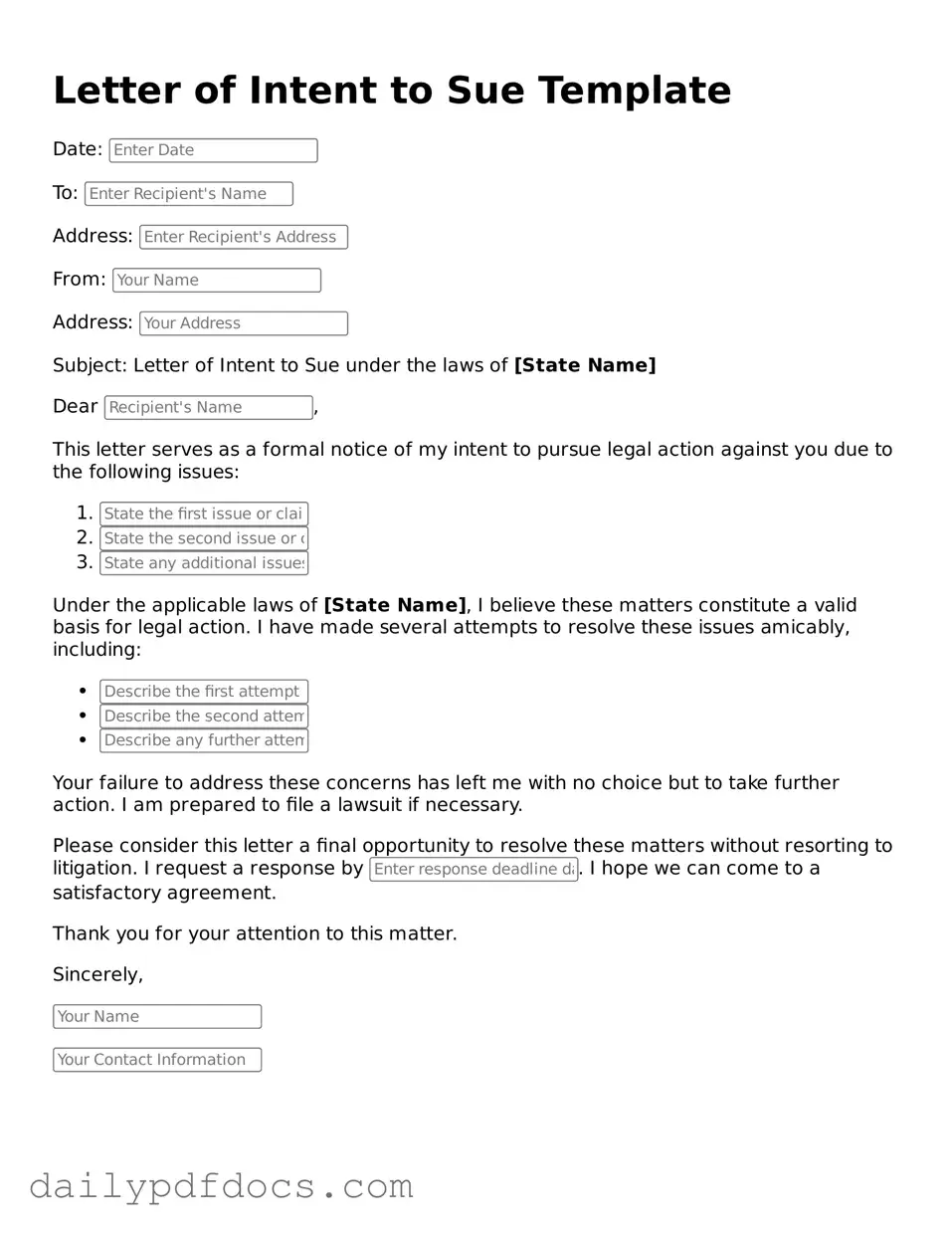What is a Letter of Intent to Sue?
A Letter of Intent to Sue is a formal document that notifies another party of your intention to take legal action against them. This letter serves as a warning and provides the other party an opportunity to resolve the issue before a lawsuit is filed. It outlines the reasons for the potential lawsuit, the damages you are seeking, and a timeline for response. This letter can help facilitate communication and may lead to a resolution without going to court.
When should I send a Letter of Intent to Sue?
You should consider sending a Letter of Intent to Sue when you have tried to resolve a dispute through other means, such as negotiation or mediation, and those efforts have failed. It is typically used in situations involving contract disputes, personal injury claims, or other legal grievances. Sending this letter can be an important step before filing a lawsuit, as it shows that you are serious about your claim and gives the other party a chance to address the issue.
What should I include in my Letter of Intent to Sue?
Your Letter of Intent to Sue should clearly state the facts of the situation, including dates, events, and any relevant agreements or contracts. Be specific about the damages you are seeking, whether they are financial compensation, specific actions, or other remedies. It is also important to include a deadline for the other party to respond. This helps create a sense of urgency and encourages them to take your concerns seriously.
What happens after I send the Letter of Intent to Sue?
After sending the letter, you should wait for a response from the other party. They may choose to address your concerns, negotiate a settlement, or ignore the letter altogether. If they respond positively, you may be able to resolve the issue without further legal action. However, if they do not respond or refuse to settle, you may proceed with filing a lawsuit. Keep in mind that the letter itself may also serve as evidence in court, showing that you attempted to resolve the matter before escalating to litigation.
